Introduction
In modern airline catering, not all “meal boxes” are actually designed to touch food directly. Many are used as secondary packaging—serving as the outer shell that holds a casserole, salad bowl, dessert cup, water, or cutlery set.
These paper meal boxes for airline catering focus on presentation, packaging efficiency, and branding, rather than direct food contact. In this blog, we will explore their key design parameters: dimensions, structure, materials, printing, and logistical considerations in airline operations.
Table of Contents
1. Role & Function
Unlike aluminum food containers or CPET food containers, the paper box doesn’t carry the meal directly. Rather, it:
- Groups multiple components (main dish, sides, dessert, drink, cutlery) into a tidy unit
- Protects contents during handling and transport
- Provides a clean, branded surface for passenger presentation
- Facilitates fast distribution in the aircraft galley
- Enhances passenger perception of quality
A well-designed outer box improves workflow efficiency for catering staff and elevates the in-flight dining experience.
2. Dimensions & Structural Design
Key considerations:
| Parameter | Typical Range / Example | Purpose |
|---|---|---|
| Length & Width | For example, to accommodate a 170×110 mm casserole plus sides | Must fit internal components without excess slack |
| Height / Depth | 45–70 mm common | Enough clearance for food container height + dessert cups etc. |
| Flap / Lid / Closure | Tuck-in flaps, self-locking lids, or open top | Quick closure without tape |
| Stackability & Flat Pack | Foldable flat structure for shipping | Saves storage & shipping cost |
| Shape Variations | Rectangular, trapezoidal walls, boat shape | Some designs use slight taper for stacking & better fit |
Real-world reference: Juneyao Air uses a compact snack box measuring L18.9 × W13.8 × H5 cm, typically containing light snacks, a cup of water, and wet tissues. Yemen Airways, on the other hand, adopts a larger paper meal box of L27 × W18 × H5 cm, which accommodates an aluminum casserole, a side salad, snacks, wet tissues, and a cutlery pack.
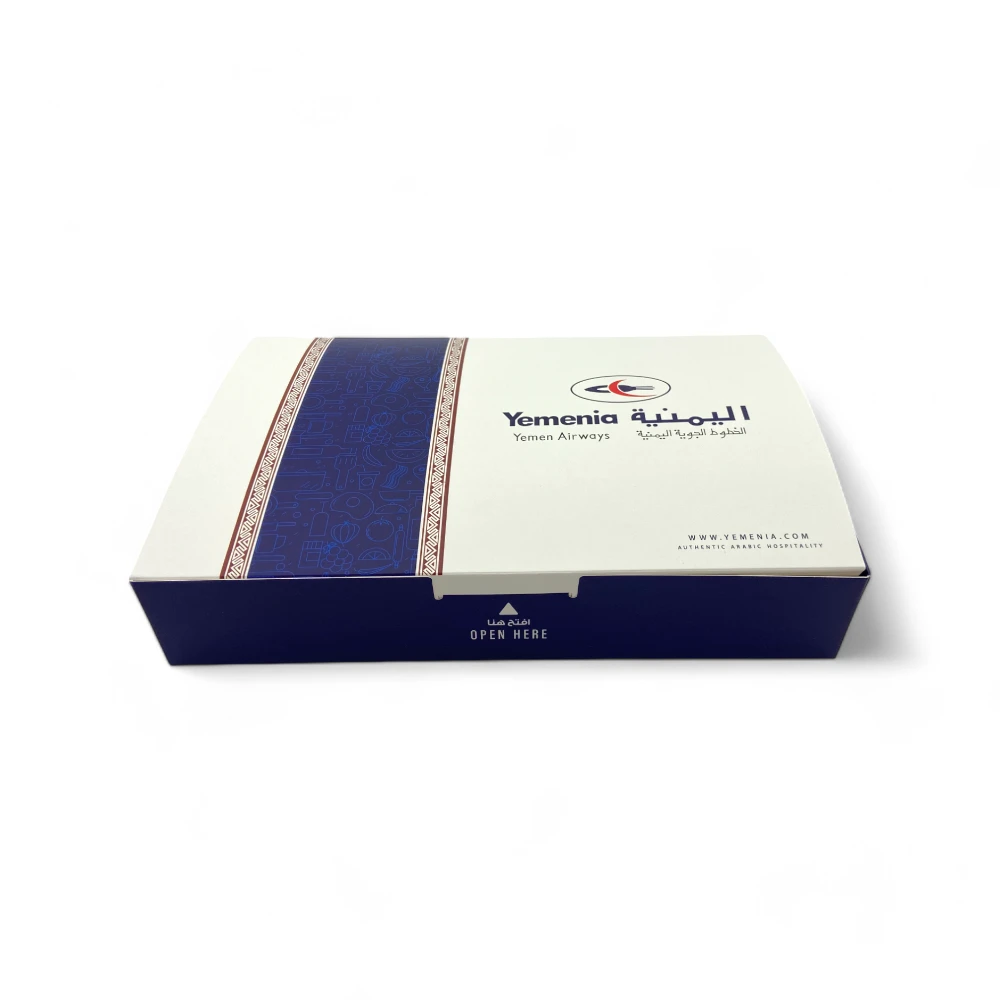
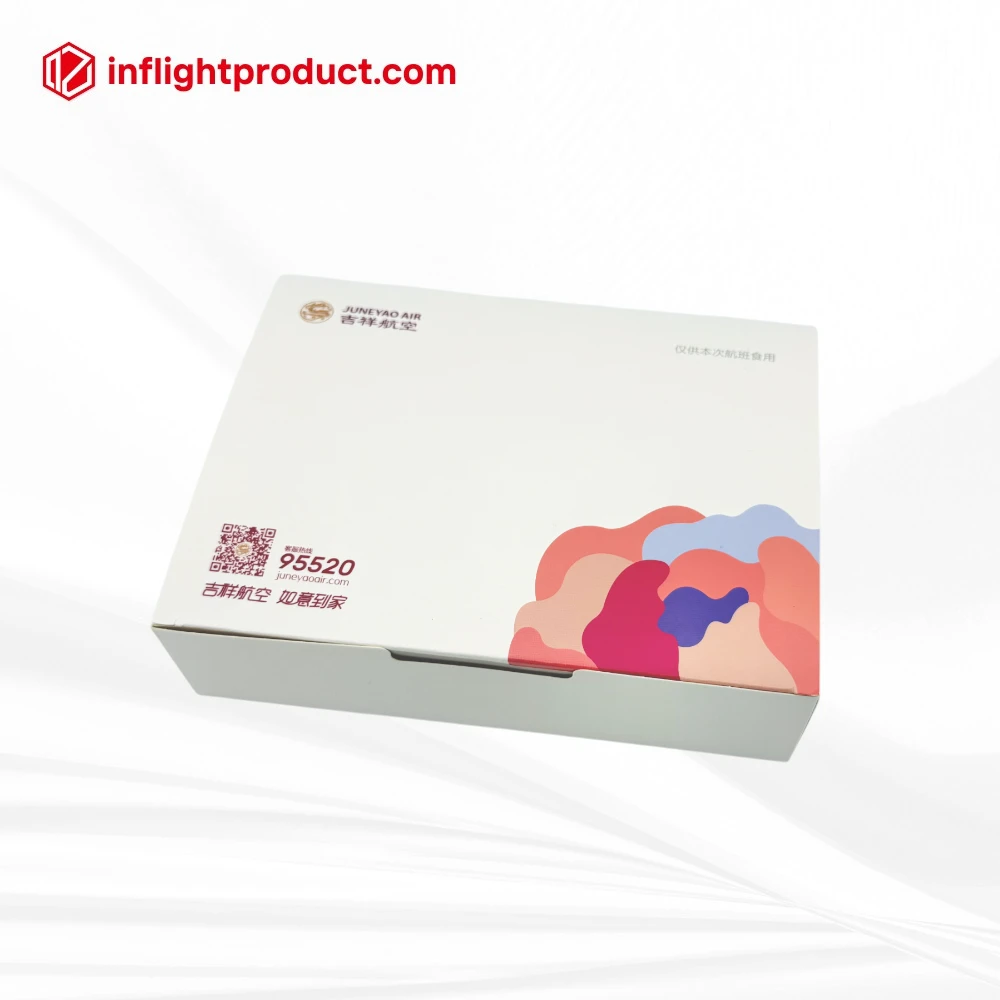
At Shanghai Yiting, we assist our airlines clients to customize the meal boxes size for their in-flight catering needs.
3. Material & Board Thickness
When it comes to the material, the strength, stiffness, and printability matter.
Common materials:
- White cardboard
Typical basis weight (thickness):
- 300–400 g/m² is common for rigid outer packaging
- Coating or lamination (matte, gloss) can be added for surface finishing
4. Printing & Branding Options
Outer paper boxes are ideal brand carriers. Some options include:
- CMYK printing
- Outer and inner printing
- Matte or glossy lamination is optional
- Eco-friendly inks (soy-based, water-based)
It’s common for airline paper meal boxes to feature printing on the lid and four sides, while the bottom is usually left blank to reduce production costs. However, some airlines take a more thoughtful approach by adding branding or welcoming messages inside the box.
For example, Juneyao Air includes a warm greeting printed on the inner side of the lid—a small but meaningful detail that makes passengers feel genuinely welcomed when they open the box, not just presented with food.
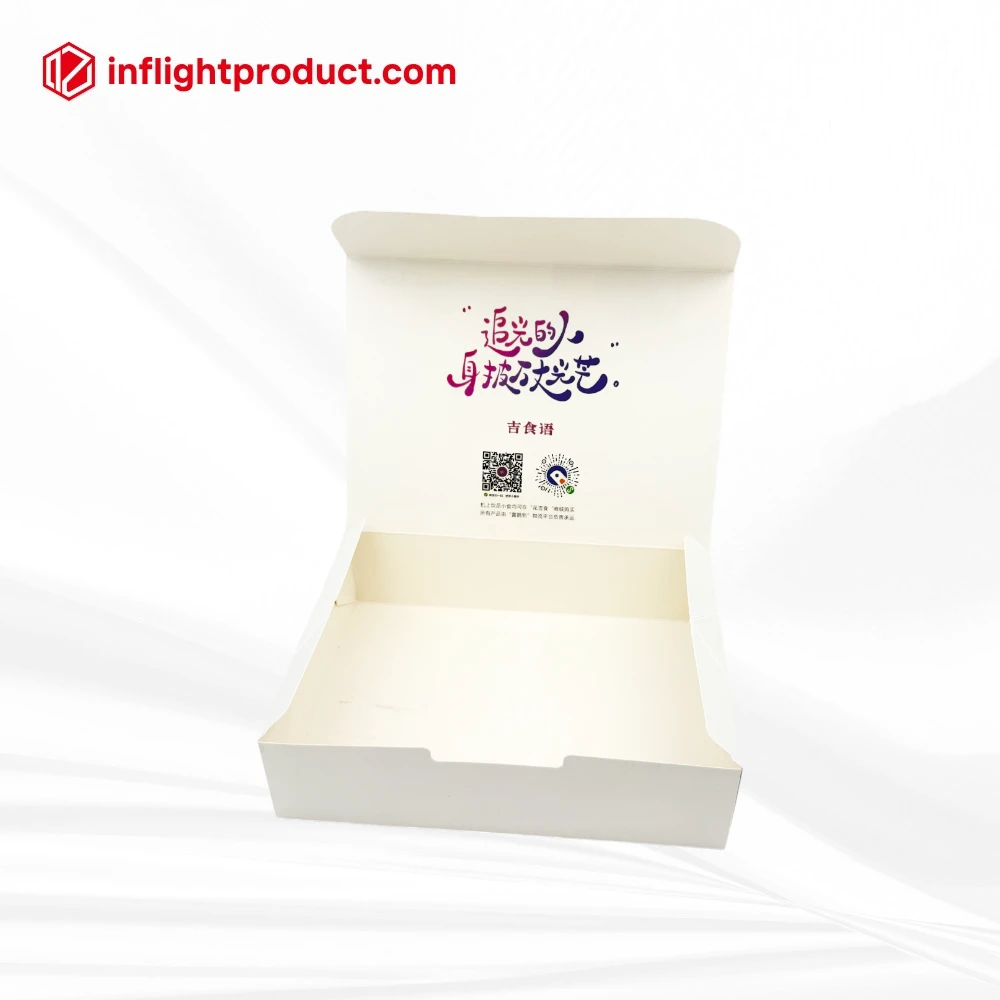
5. Assembly & Logistical Efficiency
Operational efficiency is key in airline catering. Good design features include:
- Flat-packing — ships in flat form, expands when needed
- Quick fold & locking tabs — minimal assembly time by staff
- Compatibility — fits standard airline meal and snack service
- Clear labeling — e.g. handling marks, orientation arrows
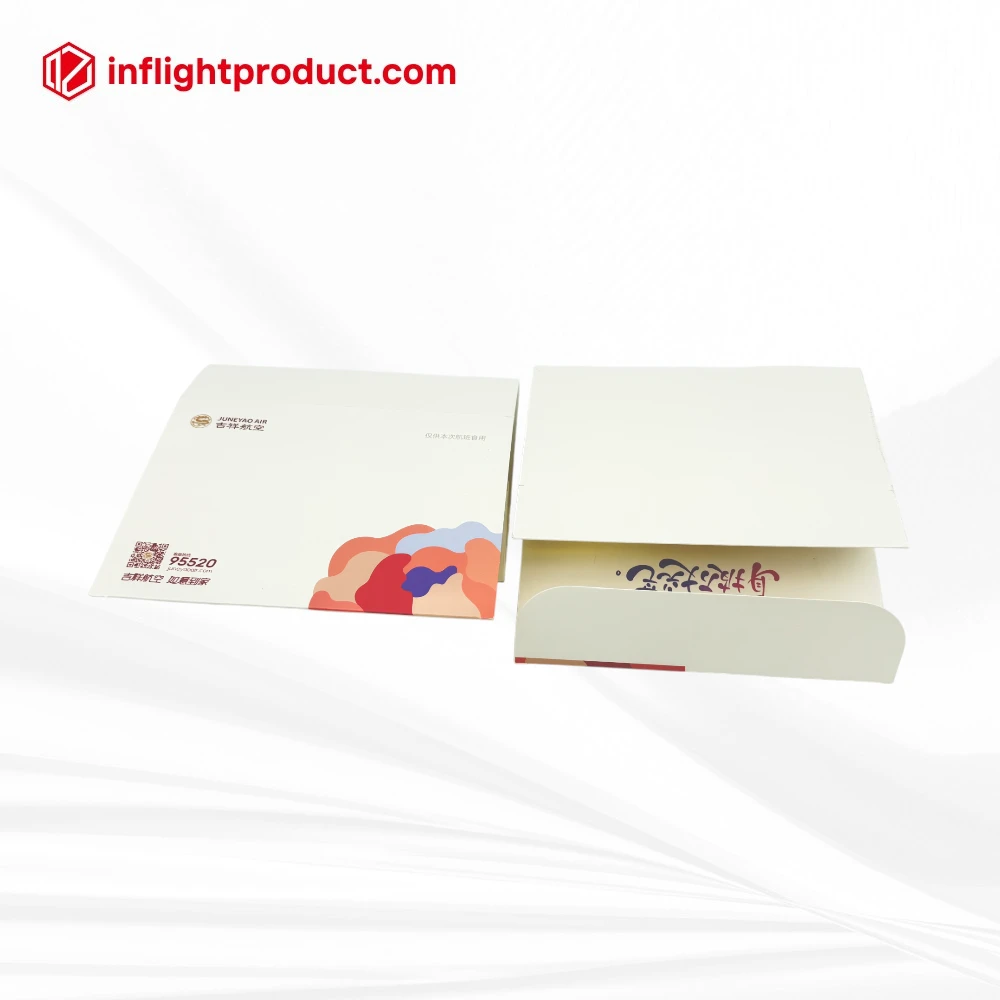
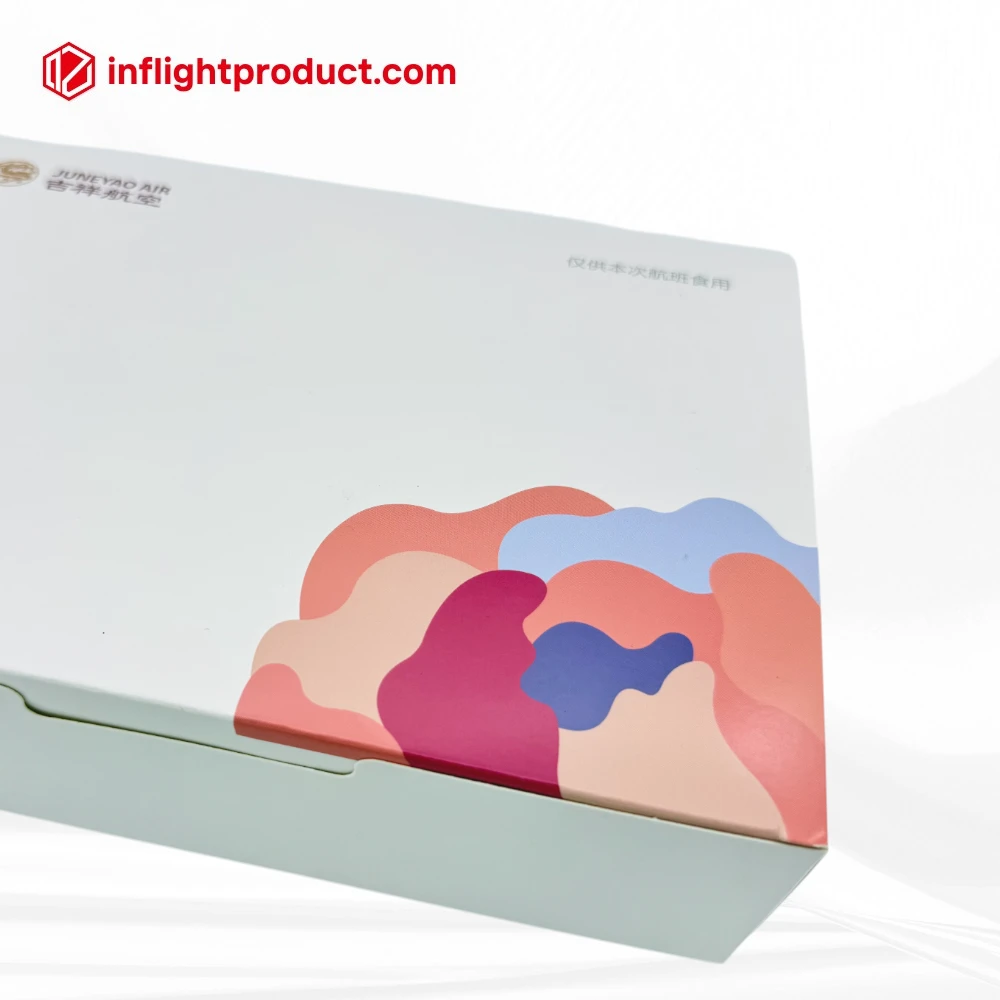
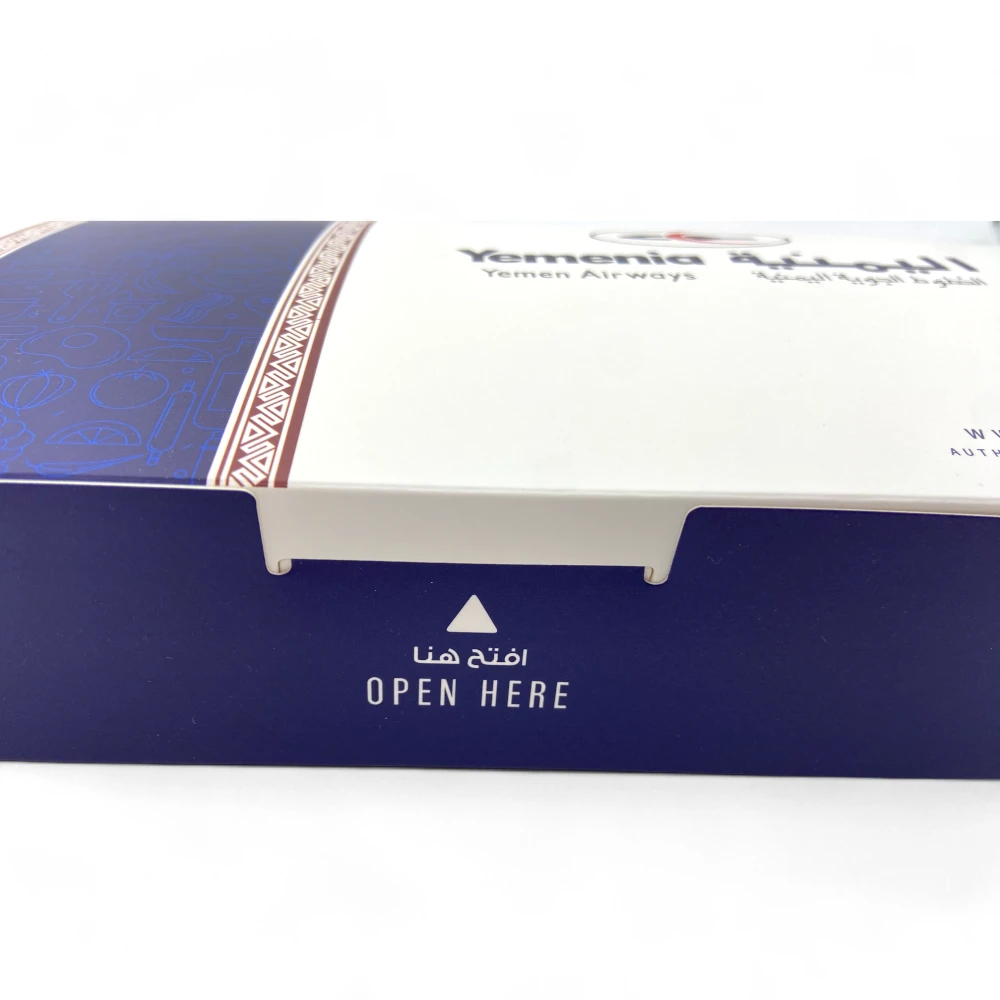
Conclusion
Paper meal boxes used as outer packaging are a key piece in the airline catering ecosystem: they combine protection, branding, and easy workflow. When you get the dimensions, structural design, printing, and efficiency right, they become a seamless part of the meal service. If you are looking for a professional team to customize your own airline paper meal box, please don’t hesitate to contact us.
Great article. You explained the value of paper meal boxes in airline catering really clearly. I like how you touched on both design and practical use.
From a business point of view, the balance between cost, branding, and sustainability is key. Airlines want packaging that looks good, holds up well in transit, and meets eco standards without raising expenses too much.
It could also be interesting to hear more about testing, like how these boxes perform with heat, stacking, and movement during flights.
Overall, very useful insights. Thanks for sharing.
Really insightful read. We’ve been exploring paper-based packaging alternatives for our short-haul meal service, and this article hits the right points — especially about printing customization and the temperature range flexibility. It’s great to see suppliers focusing not just on functionality, but also on passenger experience and brand presentation.